As homicides levels in Mexico are rising and U.S. pressure is mounting, the AMLO administration’s initial idea of giving amnesty to some criminals as a way to reduce violence appears to have been shelved. Should such an idea be revived? Vanda Felbab-Brown discusses the pros and cons. This piece was originally published by La Reforma’s Mexico Today under the headline “AMLO’s Amnesty for Criminals.”
As homicides levels in Mexico are rising and U.S. pressure is mounting, the administration of Andrés Manuel López Obrador (known widely as AMLO) is turning further away from several core precepts of the security policy with which it assumed office. The idea of giving amnesty to some criminals as a way to reduce violence that AMLO advocated on the campaign trail appears to be shelved. In December, the lower chamber of the Mexican Congress passed a law to free people sentenced for drug possession, abortion, nonviolent theft, indigenous people sentenced without an interpreter and political prisoners. If the Senate also passes it eventually, this would be very good. Not punishing such violations with prison is both just and wise. But “such an amnesty” will not change violent crime in Mexico and is a long away from the amnesty AMLO used to advocate.
Instead, high-value targeting is back and extradition of suspected criminals, including drug leader El Mencho’s son, is up. In claiming, without any evidence, that 60% of homicide victims in Mexico were under the influence of drug or alcohol, AMLO this week sounded like former President Felipe Calderón. Calderón used to whitewash rising homicides by claiming that 90% of victims were criminals, as if their murders then did not matter or were even a sign of success. Meanwhile, the United States is on the cusp of signing a deal with the Taliban in which the Taliban promises not to conduct or permit terrorist attacks against the United States and its allies, and U.S. forces will withdraw from Afghanistan after 18 years of war. The Taliban will then start negotiating with Afghan politicians a peace deal and new political settlement in which the Taliban will certainly get immunity for its crimes and likely a significant share of power. Should AMLO revive the idea of amnesty for criminals? What are the pros and cons of such arrangements in Mexico?
The proposed amnesty law for certain crimes was the most innovative and radical element of AMLO’s national security strategy. Although it remains vastly underspecified it raises potentially profound, challenging, and problematic implications for the rule of law in Mexico. It entails a complex tangle of moral, legal, victims’ rights, and rule of law dilemmas.
When the AMLO campaign and administration were pushing the idea, the amnesty and leniency policy was to combine justice, truth, and reparations to victims with potentially even full amnesty to some criminals.
The original definition of eligibility for amnesty centered on political and nonviolent crimes associated with drug trafficking and members of vulnerable groups — namely, youth, illicit crop farmers, and indigenous groups. But at one point, there was even talk of giving amnesty to entire criminal groups. If serious crimes by criminal groups were to become eligible for amnesty, the policy could amount to a surrender of rule of law to highly violent mafia groups as well as generate frictions with the United States. Essentially, such a deal would be akin to Pablo Escobar offering in the 1980s to pay of Colombia’s national debt and stop engaging in drug trafficking in exchange for immunity. Such extreme formulations for serious crimes and for entire criminal groups would eviscerate efforts to build deterrence capacity for the Mexican law enforcement apparatus, the most urgently needed improvement.
Even at the level of amnesty for individuals, many complex challenges existed with the contours of the policy as they became known. These included eligibility criteria, the need to ensure no-repetition of violations, AMLO’s requirement that victims forgive the perpetrators and perpetrators to provide reparations to victims, and a requirement that eligible individuals provide intelligence on their former criminal cohorts. Any of these could trip up the program. How would protection of beneficiaries be guaranteed against reprisals from criminal groups on which they provided intelligence? What if a victim refused to forgive the perpetrator? Could victims or their relative be identified? Who exactly is the victim of an “halcón”?
Rather than centering forgiveness on individual victims and having perpetrators be solely responsible for reparations, a national-level forgiveness principle would be far more easily operationalizable and equitable, with the Mexican state itself providing assistance to victims.
Critically, when transitional justice is employed in post-conflict settings or during regime transitions, there is a presumption that a particular era of rights’ violations and violent conflict has come to an end and will not be repeated. But that is not the case in Mexico: The country will continue to face violent criminality — frequently at an intense level — for a long time to come. Thus, an amnesty or leniency law that is not very restrictive would likely have highly deleterious effects on rule of law in Mexico by furthering undermining the already collapsed deterrence capacity of Mexican law enforcement.
The Brookings Institution is committed to quality, independence, and impact.
We are supported by a diverse array of funders. In line with our values and policies, each Brookings publication represents the sole views of its author(s).

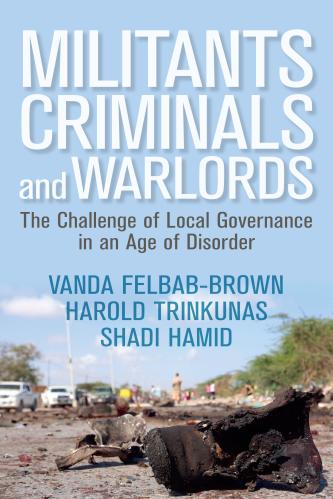
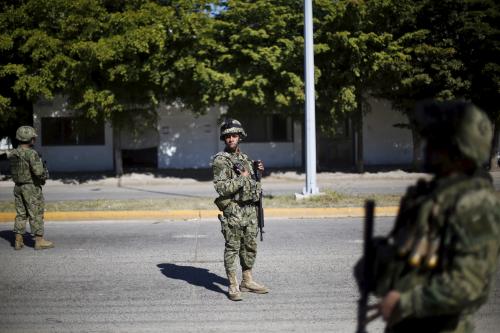
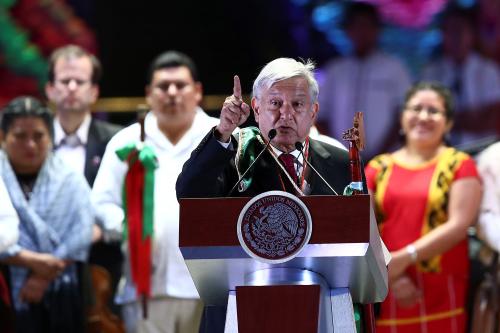
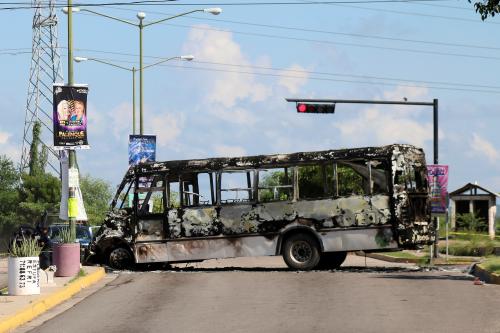


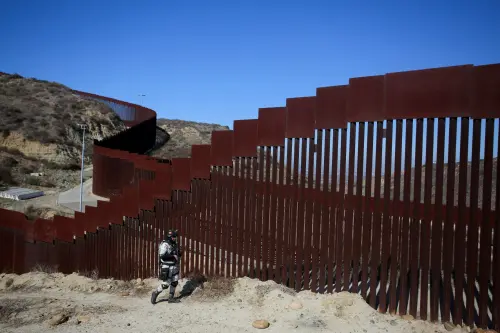

Commentary
Should Mexico revive the idea of amnesty for criminals?
March 2, 2020